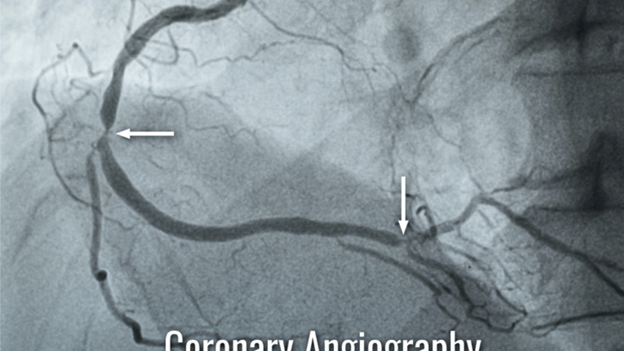A coronary angiogram plays a vital role in assessing heart health. It’s a key player when it comes to diagnosing various heart diseases. But what makes it so important? This procedure involves capturing live images of the heart’s blood vessels, which indicates any blockages or narrow passages. When you know what’s happening inside your heart’s highway, doctors can decide the best steps to keep your heart beating happily.
In this article, we’ll explore the essence of coronary angiogram and what it shows us about our heart’s health. We’ll break down the procedure to help understand how it works and the conditions it helps to reveal. By the end, you’ll get a clear picture of what to expect if you or a loved one ever needs one.
Understanding the Coronary Angiogram Procedure
So, what’s a coronary angiogram all about? Simply put, it’s a special X-ray used to check whether your heart’s blood vessels are doing their job right. This helps spot any blocked or narrowed areas that may lead to heart issues. Think of it as a peek inside your heart’s expressway.
During this process, a small, flexible tube called a catheter is placed inside your large groin or wrist artery and maneuvered to your heart. Then, a special dye that shows up under X-ray is squirted in through the tube. This dye lights up your arteries on the screen, helping doctors see exactly where any problems might be.
Here’s why this procedure matters:
- It’s precise: It gives clear images that help doctors understand what they’re dealing with.
- It’s informative: It can spot serious heart issues early, such as blockages that might lead to heart attacks.
Sometimes, doctors recommend a coronary angiogram when someone shows symptoms like chest pain, breathlessness, or signs pointing to heart trouble. If a patient has coronary artery disease or their symptoms suggest their heart isn’t getting enough blood, this test helps decide what treatments might be needed, including whether procedures like a coronary angioplasty are necessary.
It’s widely seen as the ‘gold standard’ because it provides more detailed information than many other heart tests. Plus, it guides doctors on how best to improve the heart’s blood flow.
Preparation and Process of a Coronary Angiogram
Getting ready for a coronary angiogram involves a few small preparations but nothing daunting.
- Food and Drink: You might need to avoid eating after midnight before the test. Water is usually okay.
- Medication: Your doctor will guide you on any medicines to stop or start before the test. Always bring all your medications to the appointment—that way, your healthcare team is fully informed.
- Comfort: Wear loose-fitting clothes for ease post-procedure.
When it’s time for the coronary angiogram procedure, you’ll lie flat on a comfortable table. Doctors will clean and numb a spot on your wrist or groin to prepare for inserting the catheter. It might feel like a little pinch, but you won’t feel it moving around.
After the doctor inserts the catheter, they thread it up to your heart. The special dye helps highlight your arteries on X-ray monitors. Doctors will review these images to see if any areas are narrowed or blocked.
Afterward, you’ll usually spend some observation time to ensure all is well. Some people go home the same day, while others might stay overnight, especially if further procedures are needed.
Myths, Risks, and Outcomes of Coronary Angiograms
It’s easy to have misconceptions about the coronary angiogram. You might hear people say it’s painful or risky, but that’s rarely the case.
- Fact: Though it involves inserting a tube, most people only feel mild discomfort.
- Myth: Some say a coronary angiogram is the same as coronary angioplasty. That’s incorrect; the latter is a treatment, whereas the angiogram is diagnostic.
Of course, like any medical procedure, it does carry some risks and complications—such as minor bleeding or bruising at the insertion site. However, thanks to modern technology and skilled healthcare professionals, serious risks are uncommon.
After the test, many patients find great reassurance from knowing what’s going on inside their heart. Coronary angiograms are not only safe but can be life-saving, especially when heart conditions are caught early and treated accordingly. So, they remain an essential tool in heart care, helping patients and doctors make informed decisions about their well-being.

